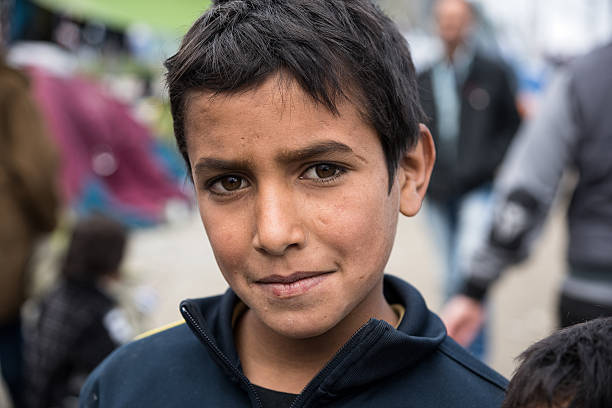Inspiration from Syria: Integrating Humanitarian Values into Elementary School Curricula

s2dikdas.fip.unesa.ac.id SURABAYA – The ongoing conflict in Syria has left an indelible mark on millions of children, turning their lives into stories of struggle, resilience, and hope. While the conflict unfolds thousands of kilometers away, its lessons in compassion, courage, and the importance of humanitarian action can inspire changes in how educators approach values-based education. Integrating humanitarian values into elementary school curricula is a powerful step toward nurturing empathy and global citizenship among young learners.
Why Humanitarian Values Matter
Humanitarian values, such as
empathy, compassion, and the willingness to help others, form the foundation of
a harmonious society. In the context of education, these values help students
develop a sense of shared responsibility and a deeper understanding of global
challenges. For elementary students, these lessons are critical as they shape
the attitudes and behaviors they will carry into adulthood.
By drawing inspiration from the
struggles of Syrian children, educators can present real-world examples that
illustrate the importance of kindness, resilience, and cooperation. These
stories serve as a gateway to discussions about broader issues such as inequality,
conflict, and the role of communities in addressing crises.
Strategies for Integrating
Humanitarian Values
- Storytelling as a Teaching Tool
Stories are a universal way to communicate complex ideas in an age-appropriate manner. Sharing narratives about Syrian children who have faced adversity and found ways to thrive despite challenges can inspire empathy among students. For instance, the story of a Syrian child finding joy in drawing despite living in a refugee camp can highlight the power of hope and creativity.
After storytelling sessions,
teachers can facilitate discussions, asking questions like, “How would you feel
in this situation?” or “What could we do to help someone in need?” These
conversations help students reflect on their emotions and develop a deeper
understanding of humanitarian values.
- Service-Learning Projects
Service-learning connects classroom learning with real-world actions, encouraging students to apply what they’ve learned in meaningful ways. For example, students could organize a school fundraiser to support refugee children or participate in community drives to collect supplies for local shelters.
These activities reinforce the
idea that even small acts of kindness can make a significant difference,
fostering a sense of agency and responsibility.
- Role-Playing and Simulations
Role-playing exercises allow students to experience different perspectives. A simulation activity where students take on roles as refugees or aid workers can help them understand the challenges faced by displaced communities.
Teachers can guide students
through scenarios that require problem-solving, such as distributing limited
resources or creating a safe space in a new environment. These activities build
empathy and critical thinking skills while reinforcing the importance of
humanitarian action.
- Art and Creative Expression
Creativity provides a safe and engaging way for students to process and express their understanding of humanitarian values. Art projects inspired by Syrian children’s stories, such as creating posters, drawings, or poems, can help students connect emotionally with the topic.
Teachers can also encourage
students to write letters of hope and encouragement, imagining they are
communicating with children affected by the conflict. This activity reinforces
compassion and the idea of shared humanity.
- Cross-Curricular Integration
Humanitarian values can be woven into multiple subjects to provide a holistic learning experience. In social studies, students can learn about Syria’s geography, history, and culture. In language arts, they can read stories or write essays reflecting on global issues. Science lessons can explore topics like water scarcity or renewable energy, connecting them to real-world challenges faced by Syrian communities.
This interdisciplinary approach
ensures that humanitarian values are not isolated lessons but are embedded
throughout the curriculum.
Challenges and Solutions
Integrating humanitarian values
into elementary education is not without challenges. Teachers may face
resistance from parents or guardians who question the relevance of global
issues in local contexts. To address this, educators can highlight the universal
nature of these values and their importance in building well-rounded,
empathetic individuals.
Another challenge is ensuring
that lessons about crises like the Syrian conflict are age-appropriate and do
not overwhelm students. Focusing on stories of resilience and positive action
can maintain a constructive and hopeful tone while still addressing the
realities of the situation.
Teachers may also need additional
training and resources to effectively incorporate these lessons. Schools can
support this by providing professional development opportunities and access to
teaching materials that align with humanitarian themes.
The Impact on Students
Introducing humanitarian values
into the curriculum has a profound impact on students’ personal and social
development. It helps them see beyond their immediate surroundings, fostering
an awareness of global interconnectedness. Students who learn about issues like
the Syrian conflict gain a deeper appreciation for diversity, resilience, and
the importance of community.
These lessons also prepare
students to become active, compassionate citizens. By understanding the
struggles faced by others, they develop the motivation to contribute positively
to society, whether through volunteering, advocating for justice, or simply
practicing kindness in their daily lives.
The stories of Syrian children,
though marked by hardship, offer powerful lessons in resilience, hope, and
humanity. By integrating these lessons into elementary school curricula,
educators can inspire young learners to embrace humanitarian values and become
more empathetic global citizens.
Through storytelling,
service-learning, creative expression, and cross-curricular integration,
teachers can create a learning environment that not only imparts knowledge but
also nurtures compassion and a sense of responsibility. In doing so, they equip
students with the tools they need to navigate an increasingly interconnected
world and contribute to a future defined by kindness and cooperation.
Author: Annas Solihin, S.Pd.
Photo Documentation: istock